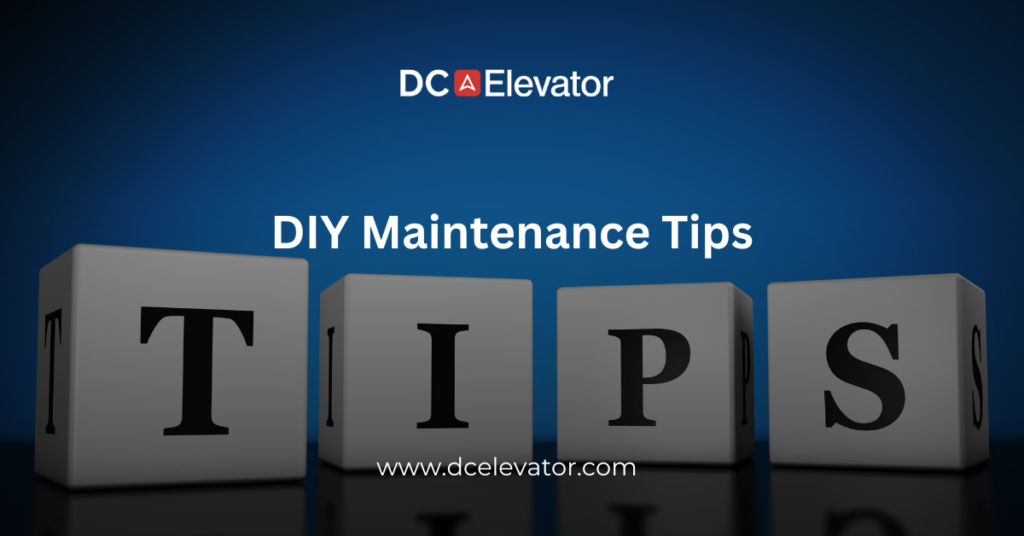Maintaining elevators is crucial for ensuring the safety, reliability, and longevity of these vital systems. While comprehensive maintenance should always be conducted by certified professionals, there are several simple tasks that building managers can perform to keep elevators in good working order between professional inspections. Here are some DIY maintenance tips for building managers:
1. Regular Visual Inspections
What to Check:
- Cabin Interior: Look for any visible damage to walls, ceiling, and flooring.
- Doors: Ensure doors are opening and closing smoothly without any obstructions.
- Lighting: Check that all lights, including emergency lighting, are functioning properly.
- Control Panel: Ensure buttons are not sticking and are properly illuminated.
Why It’s Important:
Regular visual inspections can help identify potential issues early, preventing larger problems down the line. Simple cosmetic repairs can also enhance the user experience.
2. Clean Elevator Tracks and Door Panels
How to Clean:
- Tracks: Use a vacuum or a brush to remove dirt, dust, and debris from the door tracks.
- Door Panels: Wipe down with a damp cloth and mild detergent to remove smudges and grime.
Why It’s Important:
Keeping tracks clean ensures doors open and close properly, reducing wear and tear on the mechanisms. Clean door panels maintain a professional and inviting appearance.
3. Check and Replace Light Bulbs
What to Check:
- Cabin Lights: Ensure all bulbs are working and replace any that are burned out.
- Indicator Lights: Make sure floor indicator lights and button lights are operational.
Why It’s Important:
Proper lighting is essential for safety and accessibility. Burned-out bulbs can be easily replaced to maintain a well-lit and welcoming environment.
4. Monitor and Record Performance
How to Monitor:
- Ride Quality: Take regular rides to ensure smooth operation and note any unusual noises or vibrations.
- Door Operation: Observe the speed and smoothness of door operations.
Why It’s Important:
Monitoring performance helps detect changes that may indicate emerging issues. Keeping a log of these observations can be helpful for maintenance technicians.
5. Ensure Proper Signage
What to Check:
- Emergency Instructions: Make sure emergency contact information and procedures are clearly posted inside the elevator.
- Weight Limits: Verify that weight limit signs are visible and legible.
Why It’s Important:
Clear signage is critical for safety and compliance. Ensuring emergency instructions and weight limits are clearly displayed helps users know how to respond in an emergency and avoid overloading the elevator.
6. Lubricate Moving Parts
What to Lubricate:
- Door Mechanisms: Lightly lubricate door tracks and moving parts using manufacturer-recommended products.
- Control Buttons: Ensure buttons are moving freely without sticking.
Why It’s Important:
Proper lubrication reduces friction and wear on moving parts, extending the life of the components and ensuring smooth operation.
7. Test the Emergency Alarm and Phone
How to Test:
- Alarm: Press the emergency alarm button to ensure it functions correctly.
- Phone: Test the emergency phone to verify it is working and connects to the appropriate emergency services.
Why It’s Important:
Regularly testing emergency systems ensures they will function correctly in case of an emergency, providing peace of mind for all building occupants.
Conclusion
While these DIY maintenance tips can help keep elevators in good working condition, it’s essential to schedule regular professional inspections and maintenance. Professional technicians have the expertise and tools to perform thorough checks and address more complex issues. By combining routine professional maintenance with these simple DIY tasks, building managers can ensure the safety, reliability, and longevity of their elevators.
